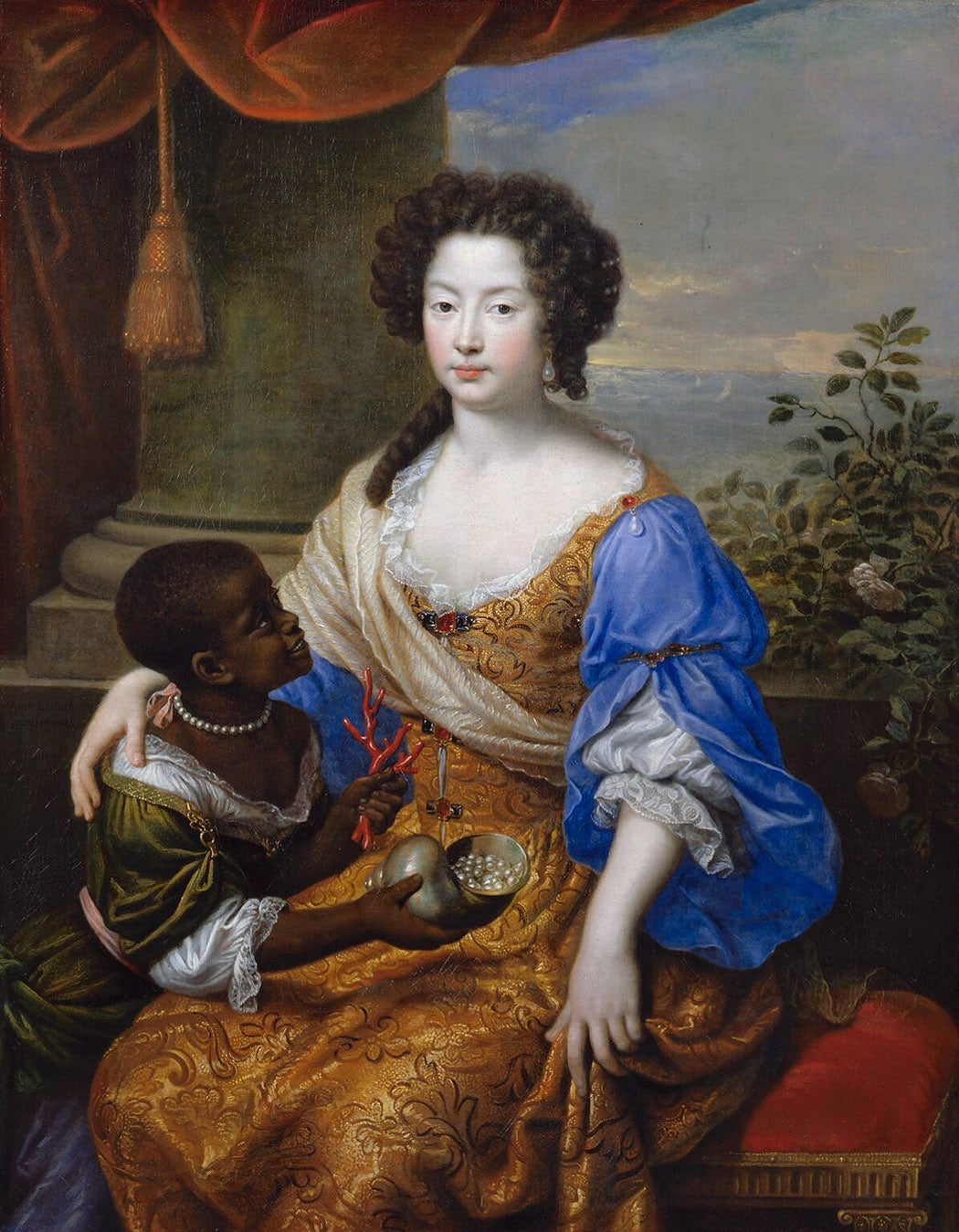The defining of race by skin color becomes visible in European art of the long eighteenth century (c. 1688–1815). It was during that time that “art, natural history, nascent anthropology, aesthetics, and colonial law converged,” writes art historian Anne Lafont, “to establish and then stabilize color as the main racial marker in the inventory of human diversity.”
On paper and canvas, a “natural element, skin color” was “manipulated synthetically to the point of providing evidence or proof of human hierarchies.”
Lafont argues that “artistic production and discourse in the eighteen century produced tools of observation and analysis that allowed human beings to be differentiated as well as implicitly classified on a moral scale, an enterprise that would later veer into explicit racism.”
Newton’s color theory, published in 1704, showed that “white is actually composed of the visible spectrum of all colors reflected and that black does not refract light.” Linnaeus’s mid-century division of people into four color groups—white, yellow, black, and red—would eventually win out over other schemes, but the first great division was between white European and black African skin.
In art, white represented light, and light, in the Enlightenment, expressed “clairvoyance and human intelligence driven by a wish for perfectibility.” As art theorist Claude-Henri Watelet wrote in 1788, “white is added [to primary colors] to express light and black to express its deprivation.” Citing Thomas Jefferson (1785) on the supposed incompatibility of the colors/races, Lafont notes that for Jefferson and others “whiteness was associated with emotional transparency [blushing] and blackness with emotional opacity that led to invisibility and, consequently, to mistrust.”
Various pigments and pastels were used to color representations of Europeans and Africans, making the visual arts “a fundamental element in early anthropology.”
Lafont discusses several portraits of aristocratic European women paired with an exotic black African servant or slave, usually a pre-adolescent child. These boys and girls were sometimes painted wearing slave collars, “even if legislation did not officially and directly allow slavery on metropolitan ground.”
One of the first French paintings to depict an African servant was Pierre Mignard’s 1682 portrait of Louise de Kéroualle, the French mistress of England’s Charles II. The Duchess of Portsmouth, as she was styled for her services to the English crown, was a key figure in the English and French alliance against the Dutch. In the portrait, the Duchess is being presented with pearls and coral by a Black girl—the “unknown female attendant” in the National Portrait Gallery’s description.

The portrait, writes Lafont, “signals an augmentation of the European powers’ natural resources through their prosperous colonies as well an exploitation of black labor, presented as docile and consenting.” There is also the “aesthetic pleasure provided by contrasts in flesh, size (the [B]lack child is always miniature), and handling, for the white hands seems to enjoy contact with these [B]lack ‘dolls.’”
Weekly Newsletter
The Duchess’s brightly white “complexion seems all the lighter for being complemented by the presence of a small, manifestly servile dark person.” Young African figures in such portraits “participated in the performative apparatus of European whiteness,” Lafont writes. For whiteness itself needed to be represented, crafted out of pastels, considered the best medium for skin tone, or oils, or watercolors. The Duchess looks like a prime example of “artificial whiteness” constructed by the “sophisticated make-ups, powders, and blushers” then fashionable and translated into oil paint by the artist.
“Whiteness was seen not only as a social value,” Lafont writes,
but also and perhaps especially as a racial value. In this century of accelerating contacts with [B]lack populations in the colonies as well as in Europe, aesthetic patterns promoted whiteness, positing it as the summit in the hierarchy of human beings according to racial criteria…
The painterly trope of the Black attendant lasted in European painting well into the nineteenth century. Edouard Manet’s otherwise unconventional and scandalous Olympia, portrayed a naked white woman with a clothed Black maid, in 1863—fifteen years after the abolition of slavery in the French colonies.







